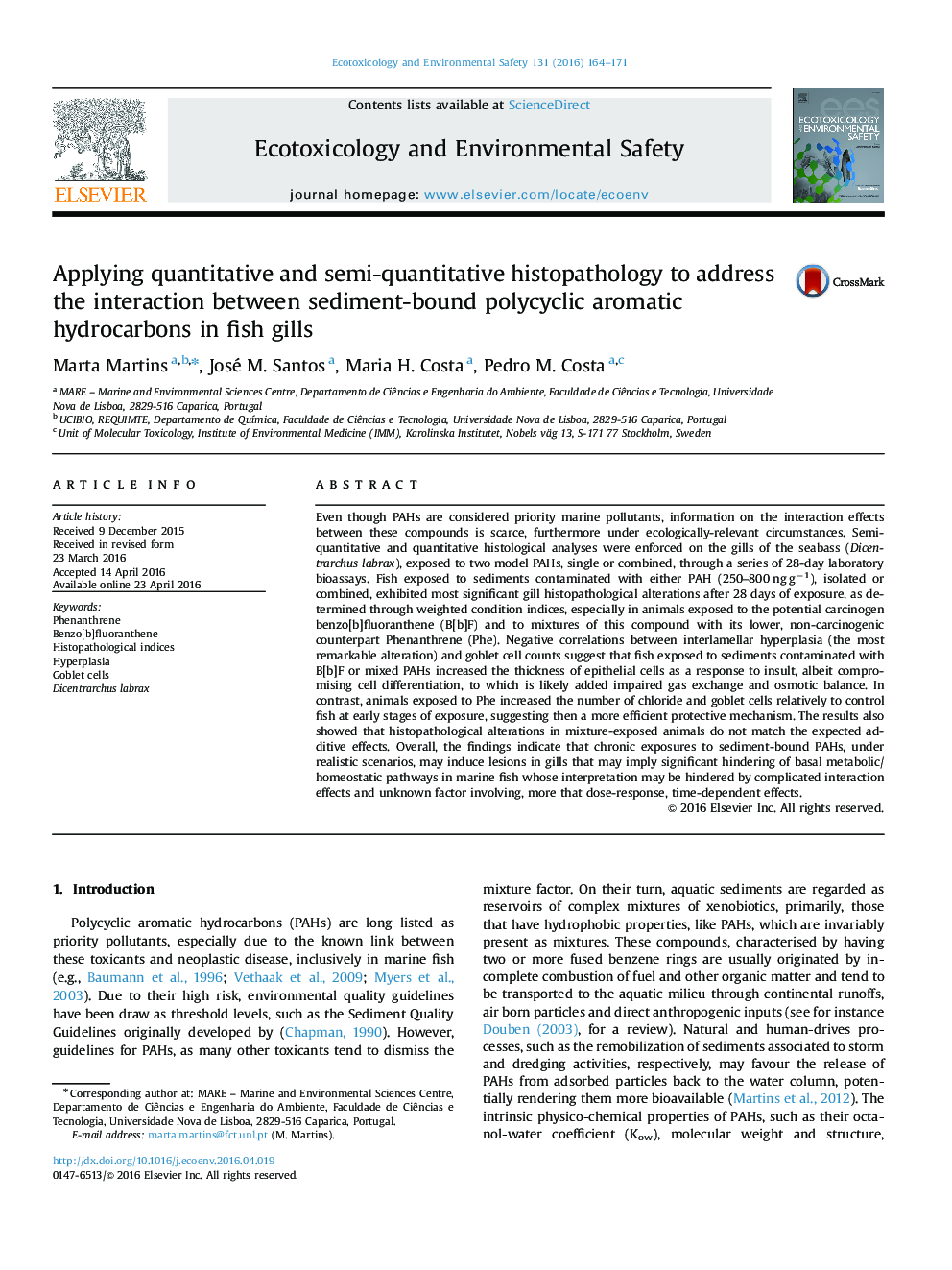| کد مقاله | کد نشریه | سال انتشار | مقاله انگلیسی | نسخه تمام متن |
|---|---|---|---|---|
| 6311929 | 1618932 | 2016 | 8 صفحه PDF | دانلود رایگان |
عنوان انگلیسی مقاله ISI
Applying quantitative and semi-quantitative histopathology to address the interaction between sediment-bound polycyclic aromatic hydrocarbons in fish gills
ترجمه فارسی عنوان
کاربرد هیستوپاتولوژی کمی و نیمه کمی برای رسیدگی به تعامل بین هیدروکربن های آروماتیک چند حلقه ای در گله های ماهی
دانلود مقاله + سفارش ترجمه
دانلود مقاله ISI انگلیسی
رایگان برای ایرانیان
کلمات کلیدی
موضوعات مرتبط
علوم زیستی و بیوفناوری
علوم محیط زیست
شیمی زیست محیطی
چکیده انگلیسی
Even though PAHs are considered priority marine pollutants, information on the interaction effects between these compounds is scarce, furthermore under ecologically-relevant circumstances. Semi-quantitative and quantitative histological analyses were enforced on the gills of the seabass (Dicentrarchus labrax), exposed to two model PAHs, single or combined, through a series of 28-day laboratory bioassays. Fish exposed to sediments contaminated with either PAH (250-800 ng gâ1), isolated or combined, exhibited most significant gill histopathological alterations after 28 days of exposure, as determined through weighted condition indices, especially in animals exposed to the potential carcinogen benzo[b]fluoranthene (B[b]F) and to mixtures of this compound with its lower, non-carcinogenic counterpart Phenanthrene (Phe). Negative correlations between interlamellar hyperplasia (the most remarkable alteration) and goblet cell counts suggest that fish exposed to sediments contaminated with B[b]F or mixed PAHs increased the thickness of epithelial cells as a response to insult, albeit compromising cell differentiation, to which is likely added impaired gas exchange and osmotic balance. In contrast, animals exposed to Phe increased the number of chloride and goblet cells relatively to control fish at early stages of exposure, suggesting then a more efficient protective mechanism. The results also showed that histopathological alterations in mixture-exposed animals do not match the expected additive effects. Overall, the findings indicate that chronic exposures to sediment-bound PAHs, under realistic scenarios, may induce lesions in gills that may imply significant hindering of basal metabolic/homeostatic pathways in marine fish whose interpretation may be hindered by complicated interaction effects and unknown factor involving, more that dose-response, time-dependent effects.
ناشر
Database: Elsevier - ScienceDirect (ساینس دایرکت)
Journal: Ecotoxicology and Environmental Safety - Volume 131, September 2016, Pages 164-171
Journal: Ecotoxicology and Environmental Safety - Volume 131, September 2016, Pages 164-171
نویسندگان
Marta Martins, José M. Santos, Maria H. Costa, Pedro M. Costa,
